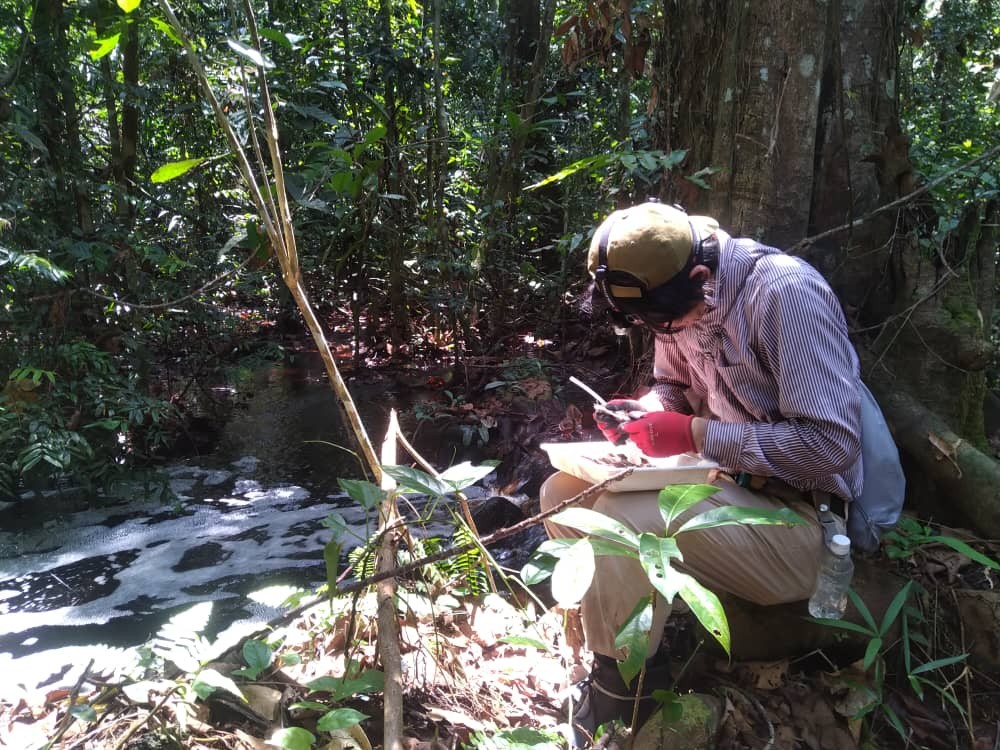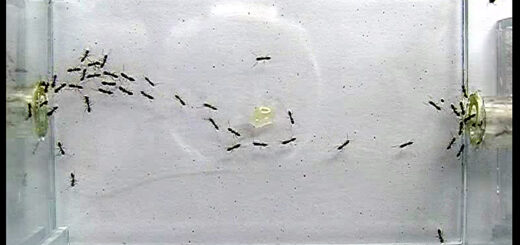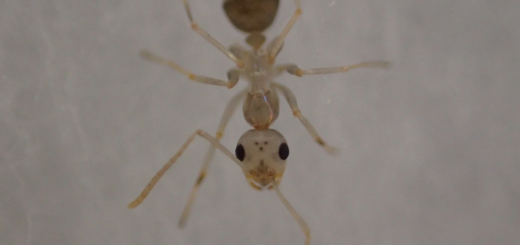Strumigenys mutica confirmed to be a temporary social parasite of other Strumigenys species
Temporary social parasitism, where the parasite ant invades a host colony, kills its queen and uses the host workers to rear the offspring of the parasite queen, is the most common form of social parasitism in ants. While social parasitism is very common among ants of the Formicinae subfamily, it is rarely observed in myrmicine ants. For example, the myrmicine Strumigenys genus is highly biodiverse, with over 800 extant species, but only a handful of species in this genus are characterized as social parasites. Previous research has suggested that Strumigenys mutica is a temporary social parasite of two other Strumigenys species based on observations of mixed colonies. In their recent paper “Temporary social parasitism in the ant Strumigenys mutica: colony composition and behavioral interactions with host species Strumigenys solifontis and Strumigenys lewisi”, Mizuno et al. describe the composition of mixed and pure S. mutica colonies, how the parasitic ants interact with their host ants, and conclusively demonstrate that S. mutica is a temporary social parasite of S. solifontis and S. lewisi.
A Photoblog contribution by Riou Mizuno

Edit by Beatriz Portinha and Salvatore Brunetti



Figure 1 – A parasitic Strumigenys mutica queen (large red arrow) and their workers (small red arrows) can be seen here and identified by their smaller size and shorter mandibles. Host S. solifontis workers (black arrows) can be found alongside the parasite queen and workers and may be distinguished by their large size (about two times larger than the parasitic workers) and long mandibles. This is an image of a mixed colony containing parasite queens and workers, and host workers, that was retrieved from the field and reared in an artificial nest for three months. Scale bar 1 mm.
Video 1 – A host worker (S. solifontis) can be seen grooming a parasitic Strumigenys mutica worker, showing a high level of integration of the parasitic species in the host colony.

Figure 2 – Two Strumigenys mutica queens with physogastric abdomens (i.e., enlarged abdomens due to bigger reproductive structures, associated with high fecundity) can be seen (red arrows), as well as a large egg pile in the top left corner (black arrow), indicative of their high fecundity. Scale bar 1 mm.

Figure 3 – A mature colony can be seen here. Mature S. mutica colonies have a high colony size (up to 5000 S. mutica workers), associated with the high fecundity of their queens, which is unlike other Strumigenys species. Scale bar 1 mm.

Figure 4 – Strumigenys mutica can be seen accepting a freshly killed Turkestan cockroach nymph (classified as general insect prey) as a food source, which is unlike many other Strumigenys species, that prey specifically on sprintails





The article is interesting but this blog is less…. Sorry. X